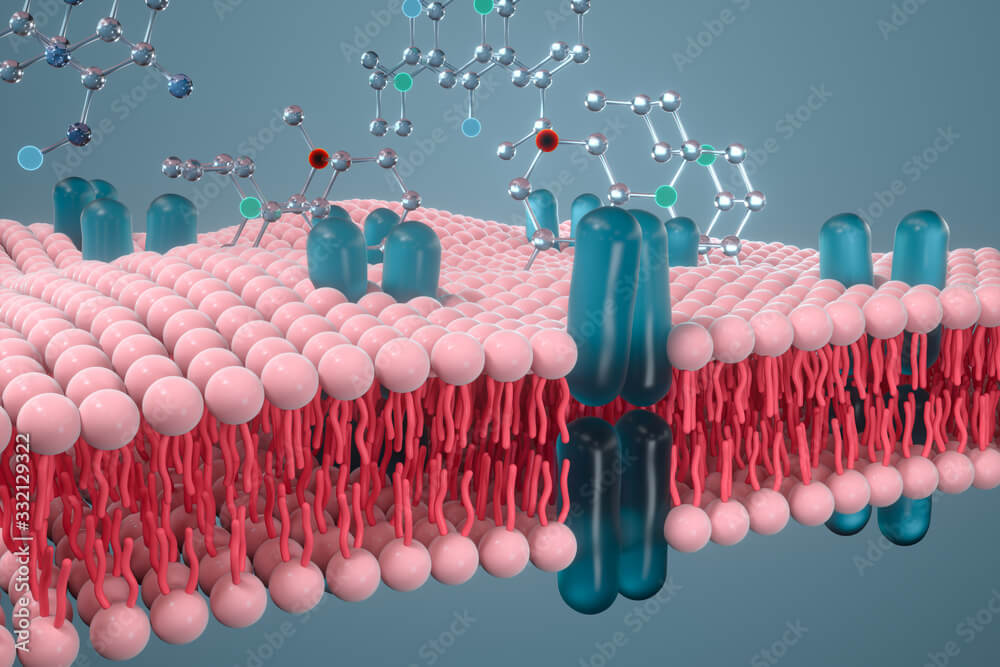The plasma membrane, also known as the cell membrane, is a crucial structure that surrounds all living cells. It separates the internal environment of the cell from the extracellular environment, regulating the flow of substances in and out of the cell. The plasma membrane plays a central role in maintaining cell homeostasis, which is the balanced and stable internal environment required for cells to function optimally. Let’s delve into the structure, function, and role of the plasma membrane in maintaining cell homeostasis:
Structure of the Plasma Membrane: The plasma membrane is a selectively permeable lipid bilayer composed of phospholipids, proteins, carbohydrates, and cholesterol molecules. Its fundamental structure is often referred to as the fluid mosaic model, illustrating the dynamic and flexible nature of the membrane.
Phospholipid Bilayer: The primary structural component of the plasma membrane is a double layer of phospholipid molecules. Phospholipids have a hydrophilic (water-attracting) head and two hydrophobic (water-repelling) tails. The hydrophilic heads face outward, interacting with the aqueous extracellular and intracellular environments, while the hydrophobic tails are oriented inward, shielded from water.
Proteins: Proteins are embedded within or attached to the lipid bilayer. They can be classified as integral proteins, which span the membrane, and peripheral proteins, which are associated with the membrane’s surface. Proteins serve various functions, including transport of molecules, enzymatic activity, cell signaling, and structural support.
Carbohydrates: Carbohydrates are often attached to proteins (glycoproteins) or lipids (glycolipids) on the extracellular side of the plasma membrane. These carbohydrate chains play a role in cell recognition, adhesion, and communication.
Cholesterol: Cholesterol molecules are interspersed within the phospholipid bilayer. They help regulate the fluidity of the membrane, maintaining stability and preventing excessive rigidity or fluidity.
Function of the Plasma Membrane: The plasma membrane serves several vital functions crucial for the survival and function of cells:
Selective Permeability: The plasma membrane is selectively permeable, meaning it allows certain molecules to pass through while restricting the movement of others. This selective permeability is essential for maintaining internal balance and preventing harmful substances from entering the cell.
Transport: Integral proteins in the plasma membrane facilitate the movement of substances across the membrane. Active transport (requiring energy) and passive transport (no energy required) mechanisms, such as diffusion, facilitated diffusion, and osmosis, enable the regulated entry and exit of ions, nutrients, and waste products.
Cell Signaling: Receptor proteins on the plasma membrane’s surface play a key role in cell signaling. They bind to specific signaling molecules, such as hormones or neurotransmitters, triggering intracellular responses and coordinating cell activities.
Cell Adhesion: Proteins and carbohydrates on the plasma membrane contribute to cell adhesion, allowing cells to stick together within tissues and organs.
Endocytosis and Exocytosis: The plasma membrane is involved in endocytosis (cellular uptake of substances by engulfing them in vesicles) and exocytosis (release of substances from the cell through vesicles). These processes are essential for nutrient intake, waste elimination, and cell communication.
Role in Maintaining Cell Homeostasis: The plasma membrane’s role in maintaining cell homeostasis is multi-faceted:
Ion and Nutrient Balance: The selective permeability of the plasma membrane regulates the movement of ions (such as sodium, potassium, and calcium) and nutrients (such as glucose and amino acids) in and out of the cell. This helps maintain appropriate internal concentrations required for cellular processes and functions.
Waste Elimination: The plasma membrane controls the removal of waste products and toxins from the cell, preventing their accumulation and potential harm.
Osmotic Balance: The membrane regulates water movement through osmosis, ensuring that cells do not shrink or swell excessively due to changes in extracellular osmotic conditions.
Cellular Communication: Cell signaling through the plasma membrane allows cells to respond to external cues and coordinate their activities with other cells in a tissue or organism.
In conclusion, the plasma membrane’s structure, function, and selective permeability are central to maintaining cell homeostasis. Its intricate design enables cells to interact with their environment, regulate internal conditions, and ensure optimal functioning, ultimately contributing to the overall health and survival of the organism.





Leave a Reply
You must be logged in to post a comment.